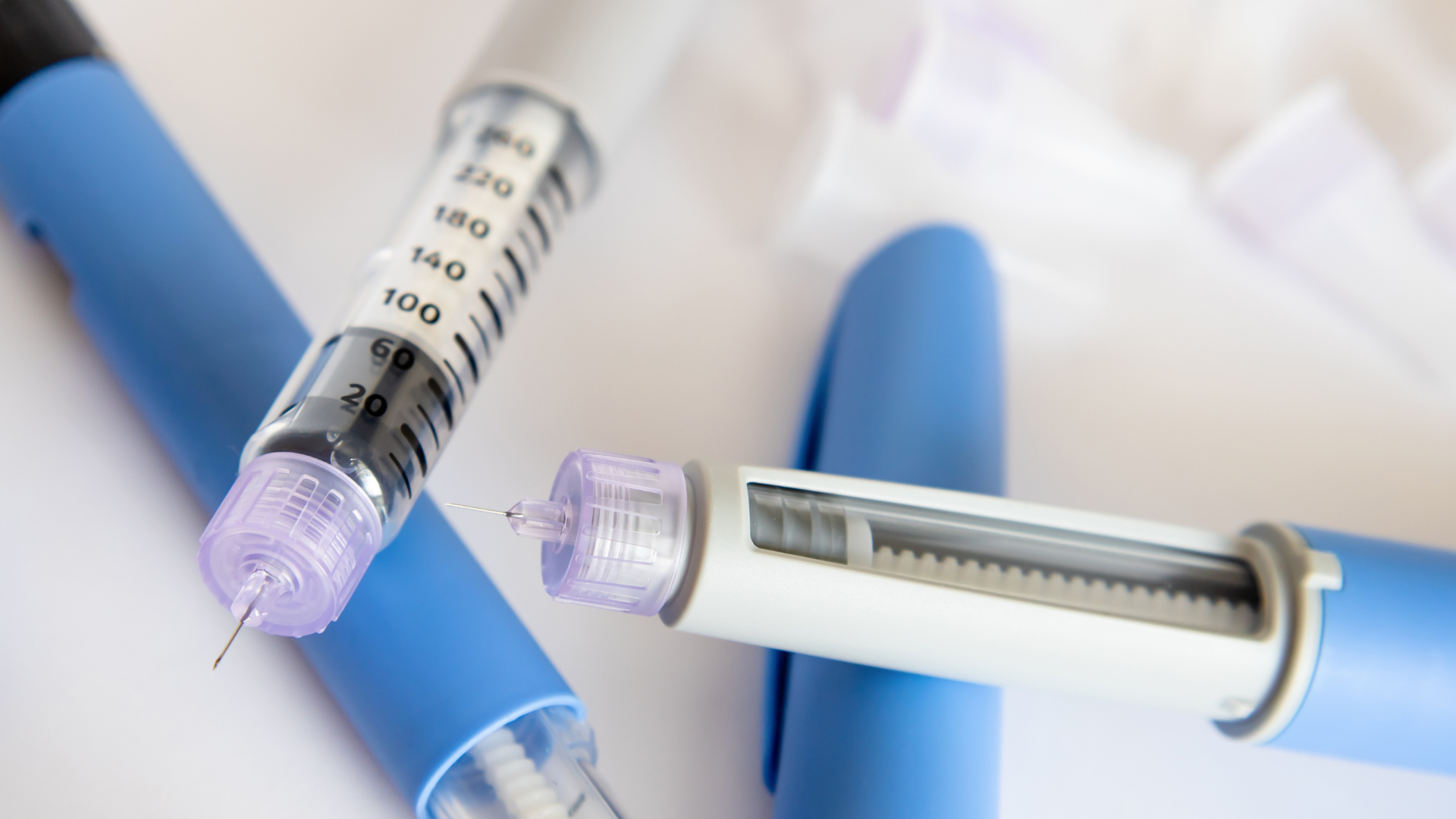How to Avoid Nerve Damage in Your Hands and Feet With Diabetes
Diabetes that is not optimally managed puts you at risk for nerve damage in your extremities. Here are steps you can take to manage or prevent neuropathy in your hands and feet.
The nervous system is your body’s command center. It controls movement, senses pain, and controls bodily functions like digestion, breathing, and sexual response. Your nervous system is made up of a network of nerves and nerve cells that constantly transfer messages to and from your brain and spinal cord, and it’s also connected with the body’s endocrine system (hormones) and circulatory system (heart and blood vessels).
If you live with diabetes, particularly diabetes that is not optimally managed, you are at risk for nerve damage, or neuropathy. While there are other non-diabetes related causes of nerve damage (such as alcohol overuse, chemotherapy, or vitamin deficiency), neuropathy as a complication of diabetes is the most likely cause of nerve damage in people with diabetes.
Learn more about nerve damage to the hands, feet, and other extremities as a diabetes complication, as well as risk factors, prevention measures, screening methods, and treatment options to manage the condition as recommended by the ADA’s most current standards of care.
Diabetic peripheral neuropathy: The primary cause of diabetes-related nerve damage to the limbs
It has been estimated that roughly half of people with diabetes will experience peripheral neuropathy at some point in their lives. (Another common form of diabetes-related nerve damage, known as autonomic neuropathy, affects other bodily functions such as blood pressure and digestion rather than the limbs.)
What is peripheral neuropathy, and how does it relate to diabetes?
Peripheral neuropathy affects nerves in the peripheral nervous system, which are the smaller nerves in the legs and arms. Peripheral neuropathy typically impacts the hands and feet. (Note that people with decreased feeling in their feet due to neuropathy are at greater risk for injuries to their feet, but there are steps that can be taken to help reduce this risk.)
Prevention and screening for nerve damage to the limbs
As usual, an ounce of prevention is worth a pound of cure when it comes to all diabetes complications. Getting and keeping your glucose levels, blood pressure and blood lipid levels in a healthy target range can aid in the prevention of neuropathy in the hands and feet. It’s also helpful to know that you may be at greater risk for nerve damage to the limbs based on certain health factors. You should also get comprehensive screenings as detailed below, and take note of any symptoms that may suggest nerve damage.
Risk factors for diabetes-related neuropathy in the hands and feet
Your chance of developing diabetes-related neuropathy correlates closely with certain factors. Risk will increase with:
- Age (neuropathy is more common with increasing age)
- Number of years since diabetes diagnosis (neuropathy is more common with longer diabetes duration)
- Having excess weight or obesity
- Smoking
- Chronic kidney disease
- Glucose levels that are consistently elevated
High blood glucose levels over time can damage the small nerves and the blood vessels in your body that bring nutrients and oxygen to your nerves. Consistently high blood pressure and abnormal levels of blood lipids, including LDL cholesterol and triglycerides, may also contribute to neuropathy.
How often to screen for diabetic peripheral neuropathy
Everyone with type 2 diabetes, and people who have had type 1 diabetes for 5 years or more, should have at least an annual comprehensive evaluation for peripheral neuropathy conducted by their healthcare provider.
For people who have a loss of sensation, a previous foot or leg ulcer or amputation, a comprehensive evaluation should be done at every diabetes-focused visit. This is true also for people who have diabetes-related kidney disease.
Even if you don’t experience any signs or symptoms of neuropathy to the limbs, make sure your healthcare provider does annual (or more frequent) clinical checks. If not, ask for them to be done. These routine checks are recommended in the ADA’s most recent Standards of Care supplement on retinopathy, neuropathy, and foot care.
Annual comprehensive screening for neuropathy: What to expect
As part of these clinical checks, your provider should assess for lack of sensation or numbness and adequate blood flow by:
- Feeling your skin temperature and/or using a pin to prick (not pierce) the skin on your legs, feet and hands
- Using a tuning fork that applies vibration to the skin
- Using a monofilament (a thin, stiff strand of nylon with a plastic base) on several points of your feet or legs
Symptoms of peripheral and other neuropathy to the limbs
Nearly half of the damage to peripheral nerves can occur without symptoms. The most common early symptoms of peripheral neuropathy include:
- Burning
- Tingling
- Numbness
- Loss of sensation
If you do have any nerve-related signs or symptoms, make sure you discuss them with your diabetes care provider as soon as possible. If you think certain signs and symptoms should be addressed, don’t wait for your annual evaluation. Early detection and treatment are critical to minimize problems.
Proximal neuropathy symptoms may include sudden and severe pain in the hip, buttock and/or thigh, along with weakness and loss of reflexes.
Medications and other treatments for nerve pain in the hands and feet Oral and topical medications for pain management
There is no cure and no treatment for peripheral neuropathy. There are ways to manage the pain that may accompany it, however.
There are several FDA-approved oral prescription medications for pain. Among them are Lyrica (pregabalin) and Cymbalta (duloxetine). Another medication, Neurontin (gabapentin), is similar to Lyrica and may be less expensive; however, gabapentin is not currently FDA-approved for treating diabetes-related neuropathy.
There are also topical prescription medications including lidocaine and capsaicin that can be spread on the skin or used as a patch to relieve pain.
When pain control is not achieved, a person should be referred to a neurologist or pain specialist. According to the ADA, the use of any opioid for pain management carries the risk of addiction and should be avoided.
Spinal cord stimulators for pain management
Several newer treatments for pain have recently been approved by FDA for intractable pain, or pain that is difficult to manage and isn’t relieved with medication. Spinal cord stimulators include systems such as Medtronic’s Intellis and Vanta, Nevro HFX, and First Relief.
Recommendations in this article are aimed at adults with type 1 and type 2 diabetes and excludes children and adolescents as well as pregnant people with diabetes. Discuss your targets with your healthcare providers; they may vary based on a number of personal factors.
About this series
Each year the American Diabetes Association updates its Standards of Medical Care in Diabetes based on current science. We’ve translated key points of the up-to-date Standards into plain English so you know how to stay healthy and minimize diabetes complications.
Other articles in this series:
- Your Guide to the 2023 ADA Standards of Care
- Current Targets for Lipids, Cholesterol, Blood Pressure, Time in Range, and A1C
- How to Take Care of Your Heart With Diabetes
- How to Keep Your Kidneys Healthy When You Have Diabetes
- How to Keep Your Eyes Healthy With Diabetes
- Protecting Your Liver When You Have Diabetes
Credited: [Author: Hope Warshaw], [Source: diaTribe Learn MAKING SENSE OF DIABETES], [Site: https://diatribe.org/]
Healthy Bites















